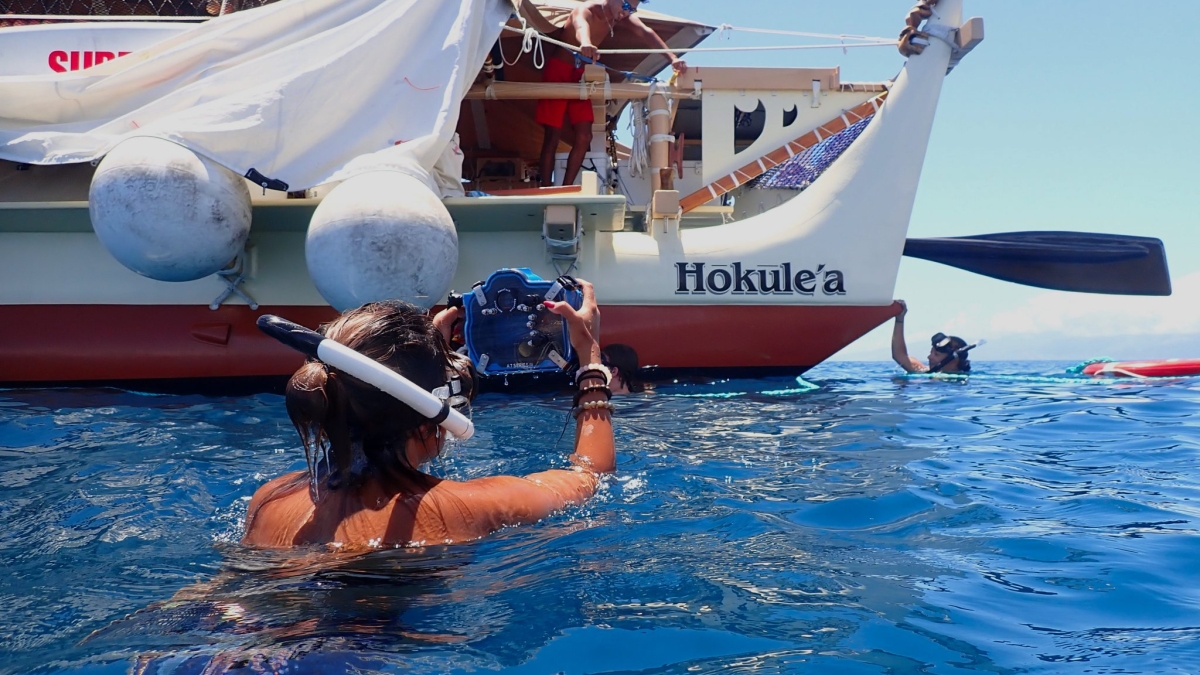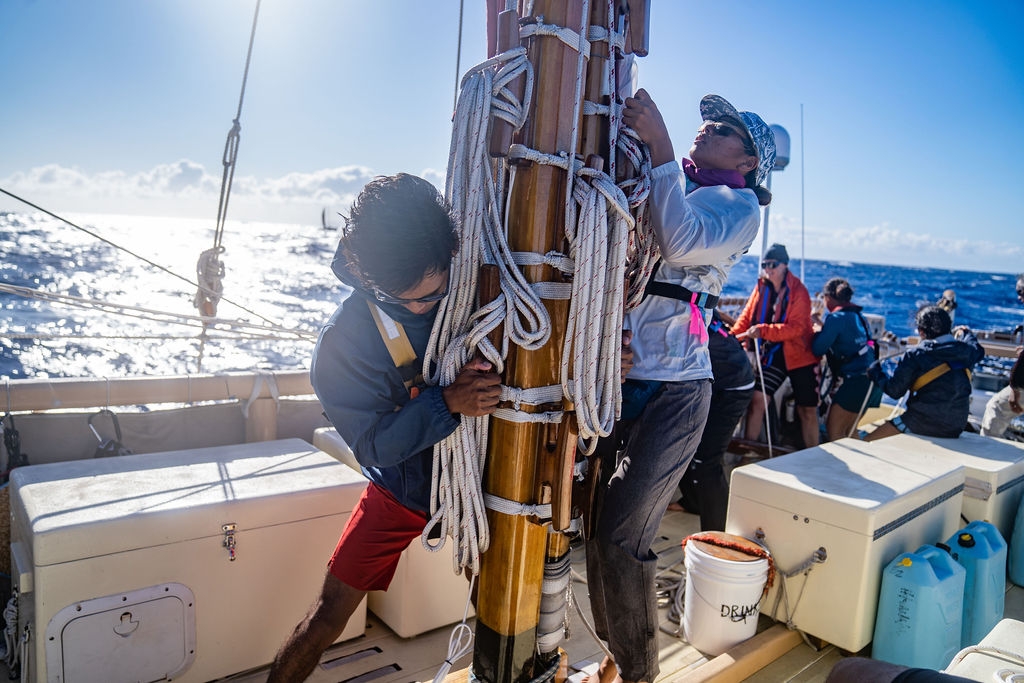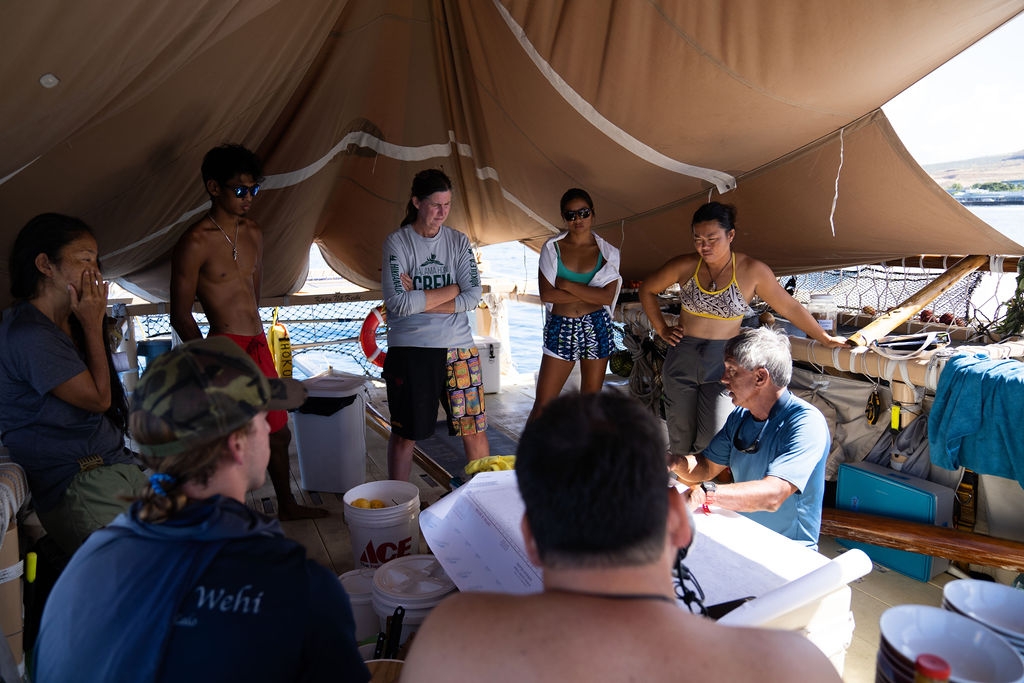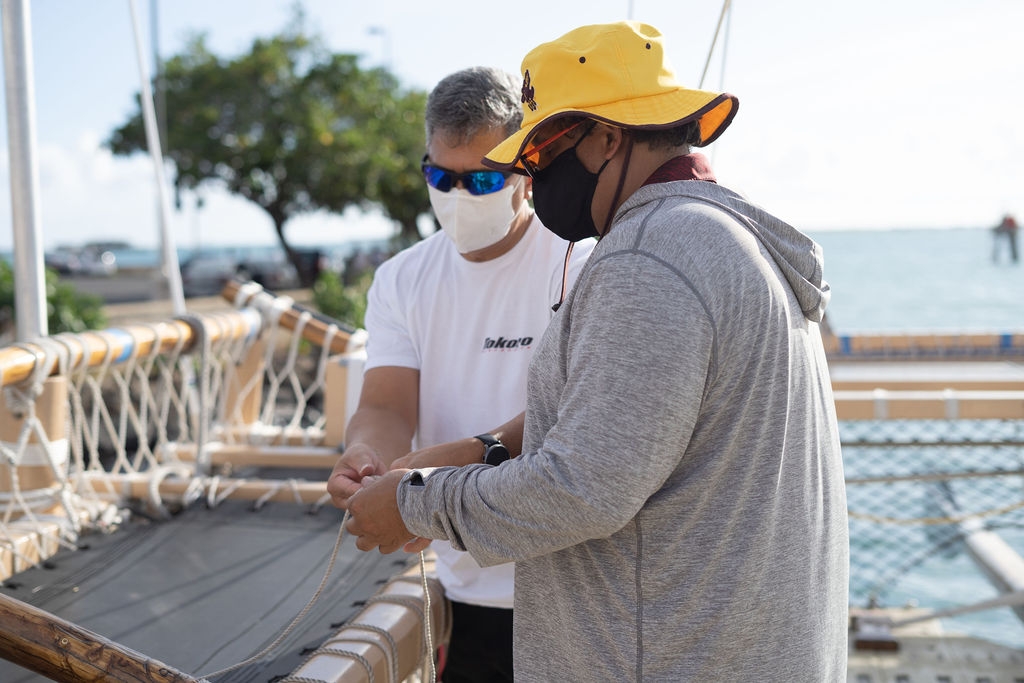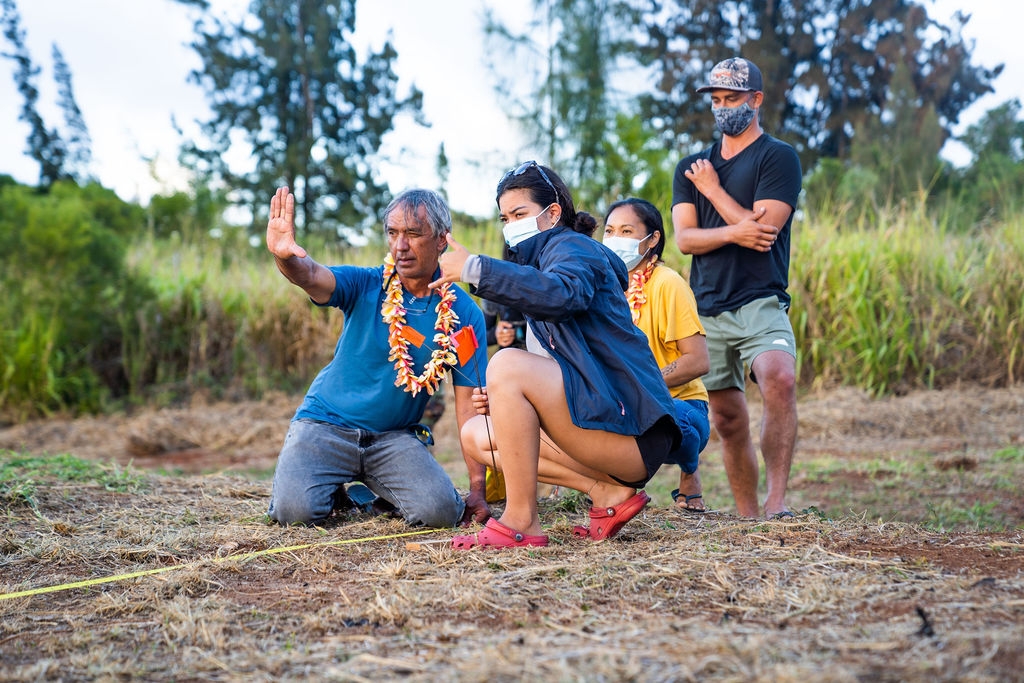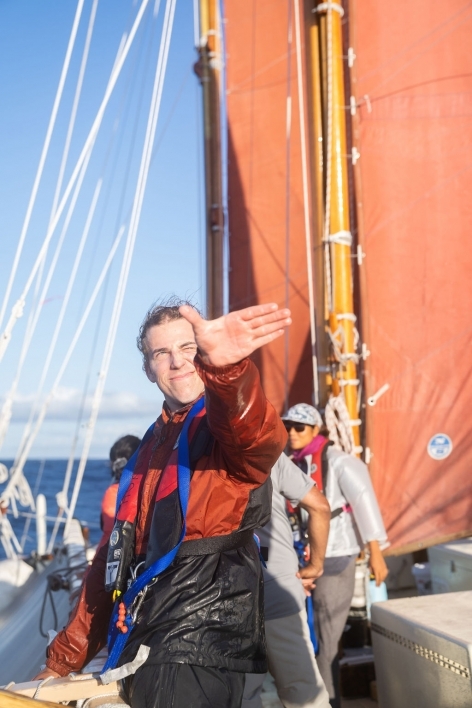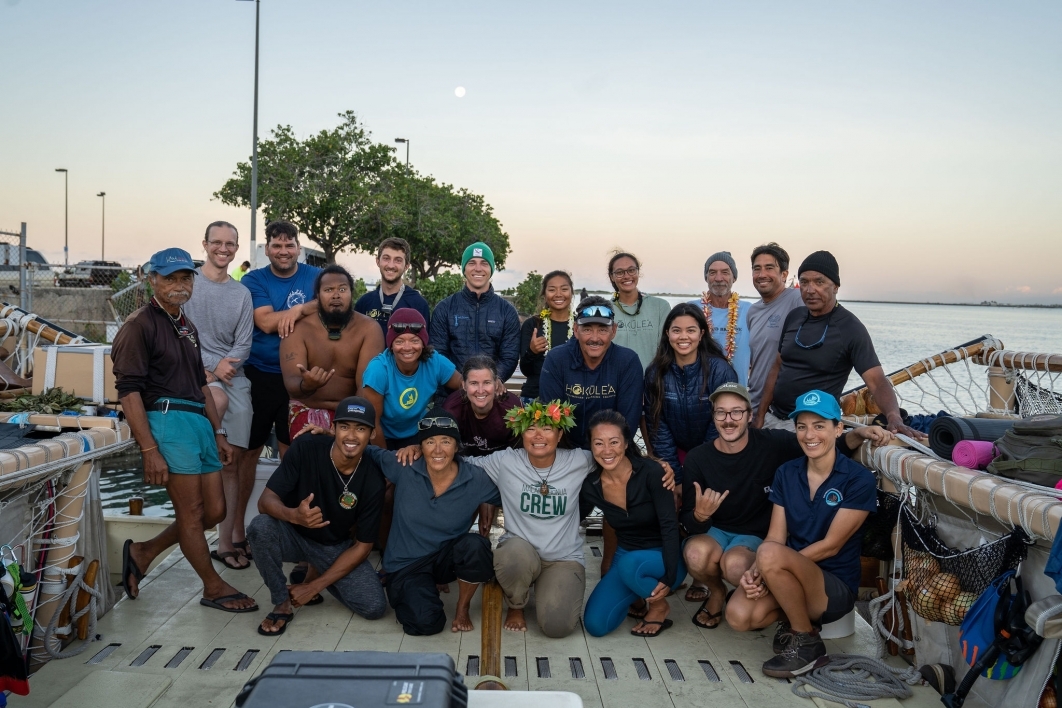For blue-water sailors, the French Frigate Shoals is often thought of as a place with significant wildlife and deep cultural meaning. The Polynesian Voyaging Society (PVS) hopes to train sailors in this spot in the Pacific Ocean.
And they won't stop there. The PVS will be venturing to four other islands and past the Papahānaumokuākea Marine National Monument, one of the largest marine conservation areas in the world.
It’s all in preparation for next year’s Moananuiākea Voyage, a circumnavigation of the Pacific Ocean in which Arizona State University will play an important partner role — all with the goal of educating and inspiring the public to act as stewards of the planet.
“These precious islands are a school that holds lessons for all of humanity and the Earth, and our canoes are the classrooms,” said Nainoa Thompson, president of the Polynesian Voyaging Society. “Because they are so rare and special, these islands will help us learn how to behave in the sacredness of nature.”
The training voyage will test navigators on five challenging deep-sea legs to the islands of Kauai, Nihoa, Mokumanamana, Lalo and Kaula.
The voyaging canoes Hōkūle'a and Hikanalia departed from Kaʻena Point in Oahu on June 18 and will travel more than 500 miles to the shoals. The three-week sail to Papahānaumokuākea will focus on the cultural and ecological significance of the area and help educators gain a better understanding of the global climate.
The trip is also a training expedition for six young navigators, who are learning from senior crew members nautical instruction, Indigenous leadership skills and sustainability research. The voyaging society's goal is to have 120 new crew trained by the end of the summer in preparation for next year’s big trip.
According to the PVS website, Papahānaumokuākea, also sometimes called the Northwestern Hawaiian islands, are considered a sacred place and a region of primordial darkness from which life springs and spirits return after death. Much of the islands’ history has been passed down in oral and written histories, genealogies, songs, dance and archeological resources. Through these sources, Native Hawaiians are able to recount the travels of seafaring ancestors between the northern and main Hawaiian Islands.
As a sea trial for the two canoes, the sail will be an opportunity to test the vessels as they prepare the canoes for the big voyage next year.
“We are fortunate to partner with PVS. The sail will highlight the unbelievable wisdom of deep-water navigation guided by the navigators of the canoes,” said Bryan McKinley Jones Brayboy, the university’s vice president of social advancement, President’s Professor, director of the Center for Indian Education, and ASU’s senior adviser to the president on American Indian Affairs.
The official voyage does not launch until May 22, 2022, but the educational mission of the voyage will commence with the Northern Hawaiian Islands sail, as the crew will be sharing lessons about navigation, leadership, Earth’s systems, and the cultural and scientific significance of the traditional sea road known as Kealaikahiki, which connects Hawaii to Tahiti.
“Our role is to support, amplify and enhance PVS’ message,” Brayboy said. “That message is: We all share one home — planet Earth. We will work with PVS to create a 'Third Canoe,' a virtual platform that will convene people, ignite a passion to be in better relation with the planet, inspire new navigators and leaders, and ignite action.”
ASU is partnering with various organizations and units, including ASU Knowledge Enterprise, to support the creation of that online platform, which will allow educators and students across the globe to virtually participate and learn. The project joins a roster of other partnerships, initiatives and research in Hawaii regarding food systems, oceans and education that ASU has launched in the past year.
“It’s an enormous privilege working with the Polynesian Voyaging Society to help realize their vision for a ‘Third Canoe,’” said Ji Mi Choi, vice president of ASU Knowledge Enterprise. “Their role in preserving and advancing Indigenous knowledge and the reach they achieve through their sails are culturally, historically and societally rooted fundamentally in justice and care for our shared Earth.”
The test will also be the pilot for new satellite technology and the new PVS voyage portal at hokulea.com.
ASU’s Philamer Batangan has already shot many hours of video footage and photographs in various Hawaii locations.
“As a storyteller, I believe in the importance of the work we’re doing to ensure we have photos and videos of the work that’s being done out here,” said Batangan, a videographer with the ASU Foundation. “It’s not just for posterity but it’s also to honor and ensure history that perpetuates a culture as well. … I’ve been on sailing boats, fishing boats and ferries, but being on that canoe is a special experience.”
Generally, there are only 12 to 15 individuals on any leg of a sail. The Third Canoe will create virtual reality experiences that will allow millions to understand what it’s like to be part of a voyage. This will include virtual labs and educational experiences, linking learners from around the globe to think about the future of the planet.
“The Pacific Ocean voyage will serve as a point of coalescence for researchers and educators at ASU — and elsewhere — to imagine and create a future that helps make the planet more habitable and allows for new relations among peoples for shared purpose,” Brayboy said.
When the official voyage sets sail next year, the 41,000-mile, 42-month circumnavigation of the Pacific will cover 46 countries and archipelagoes, nearly 100 Indigenous territories and 345 ports. In addition to accumulating research on the importance of the ocean, nature and Indigenous knowledge, the goal of the voyage is to develop 10 million new crew members, navigators and leaders for the planet.
Top photo: Members of the Polynesian Voyaging Society prep the canoe Hōkūle’a for a test sail in the Pacific Ocean. It’s all in preparation for next year’s Moananuiākea Voyage, a circumnavigation of the Pacific Ocean in which Arizona State University will play a crucial role. Photo courtesy of Philamer Batangan/ASU Foundation
More Science and technology

ASU professor wins NIH Director’s New Innovator Award for research linking gene function to brain structure
Life experiences alter us in many ways, including how we act and our mental and physical health. What we go through can even change how our genes work, how the instructions coded into our DNA are…

ASU postdoctoral researcher leads initiative to support graduate student mental health
Olivia Davis had firsthand experience with anxiety and OCD before she entered grad school. Then, during the pandemic and as a result of the growing pressures of the graduate school environment, she…

ASU graduate student researching interplay between family dynamics, ADHD
The symptoms of attention deficit hyperactivity disorder (ADHD) — which include daydreaming, making careless mistakes or taking risks, having a hard time resisting temptation, difficulty getting…
